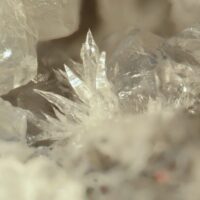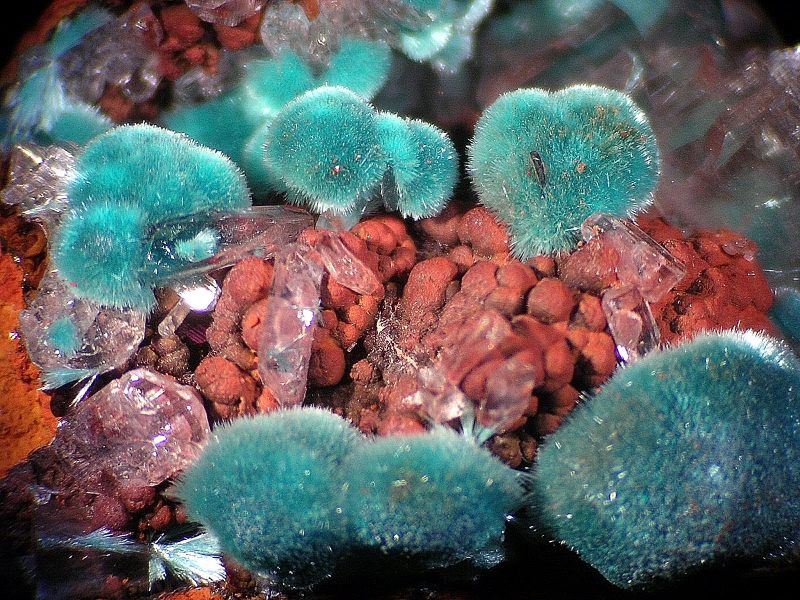The most beautiful mineral specimens are the smallest. Under the microscope, those tiny crystals are crisp and clear, the colors clean and bright. Micromounters collect such tiny minerals and mount them in protective boxes to make micromounts.
In this workshop, taught by an inductee to the Micromounters’ Hall of Fame and the NHSM Curator of Minerals, you will learn about this fascinating hobby, examine micromineral specimens under a microscope, and prepare and mount mineral specimens to take home as the beginning of your own micromount collection.
“There are lots of reasons to take up micromounting,” says Mike Seeds, “but I think the main ones are the fabulous beauty of the minerals and the fact that they are very inexpensive — free in most cases. Words fail me when I try to tell people the beauty I see through my microscope. People pay as much as $100,000 for big specimens that are not nearly as nice as the little rocks I have in my collection. And I got them for two or three dollars or, in most cases, free from giveaway tables.”
In addition to being inexpensive and accessible, micromounts are also small. A collection of a thousand could fit in a large shoebox. Best of all, micromounters can collect lots of different minerals. Nearly 6000 minerals are known, but only a few hundred form crystals big enough to see without magnification. The rest form micro crystals, and micromounters typically gather collections of many hundreds of different minerals.
About the Instructors: Collectively, their collections total over 10,000 micromounts, including over 1500 different mineral species.
- Mike Seeds (Baltimore Mineral Society [BMS] bulletin editor and 2020 inductee into the Micromounters’ Hall of Fame) has a Ph.D. in Astronomy, taught at Franklin and Marshall College for 32 years, and has been micromounting since 1999.
- Al Pribula (BMS President and NHSM Mineral Curator) has a Ph.D. in Chemistry, taught at Towson University for 38 years, and has been micromounting since 1980.
NOTE: All specimens, equipment, and mounting materials will be supplied, but if you have a 10X or 20X loupe, bring it along. Participants will also receive a credit towards the registration fee at the Micromount Symposium being held by the BMS at the NHSM building on the weekend of October 4-9.
Full refunds are available if cancellations are made more than 7 days prior to the start of the class.

Strontianite… has a field of view of about 2 mm.
Photographs by Michael Seeds. The image labeled Rosasite… has a field of view of about 4 mm. The image labeled Strontianite… has a field of view of about 2 mm.
Location
6908 Belair Road, Baltimore, 21206



